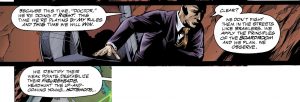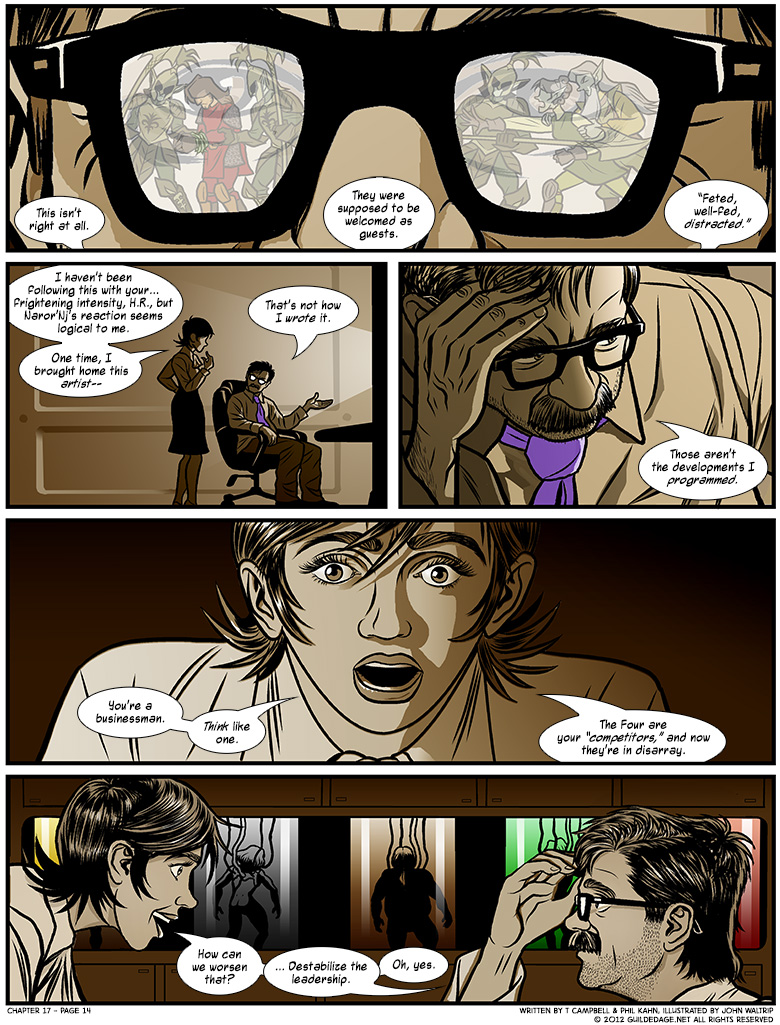Annotated 17-14
 “Not how I wrote it,” mutters HR as we contemplate how many wood elf characters we never got to use. And then he, under Carol’s supportive guidance, starts turning things around so that the remainder of this chapter is not how we outlined it. But of course, he’s moving up the timetable partly because we realized we had to.
“Not how I wrote it,” mutters HR as we contemplate how many wood elf characters we never got to use. And then he, under Carol’s supportive guidance, starts turning things around so that the remainder of this chapter is not how we outlined it. But of course, he’s moving up the timetable partly because we realized we had to.
This was Phil’s page (as are all the remaining ones in the chapter), but I put a lot into it, including the rare glimpse into Carol’s personal life. The fact that she dated an artist may have certain implications for her level of emotional involvement with HR, who for all his other faults is clearly a creative genius.
It would’ve been interesting to follow the “corporate takeover” theme I borrowed from Grant Morrison (see image) a bit further: “headhunting the young hotshots” might have resulted in HR trying to manipulate the Peacemakers’ newer recruits, those who aren’t related to the people he’s got in tubes. The insecurities of E-Merl and Bandit and the naivete of Fr’Nj would make them the most vulnerable.











Your not the first writers to discover that their characters are heading off in their own directions. Connan Doyle, Ian Fleming among others found they seemed to be losing control of the storyline. Read A. Bertram Chandler’s “Hall of Fame” Were the author and his prime character actually confront each other and debate this very issue. It’s fun.
It was around here that I really started to love the contrast between Arkerra and Sepia World. Apart from the obvious difference, things happen in Arkerra, while H.R. keeps going one step forward, two steps back. It’s repetitive, yes, but that’s the point. In spite of the more realistic art style, Sepia World feels more and more like a dream. That would change later, of course, but it really drives home the point that it isn’t “the real world” any more than Arkerra is.
I quite enjoy seeing HR’s slow descent into madness, represented by his ever-increasing dishevelment.